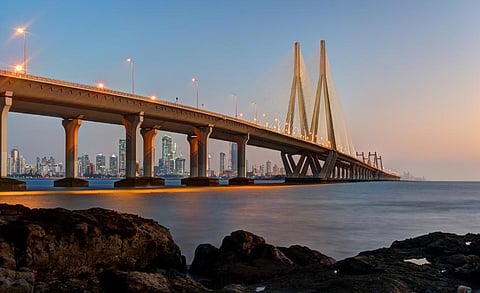Mumbai Climate Action Plan aims to remove carbon emissions by 2050. Can it be done?
The Brihanmumbai Municipal Corporation and the Maharashtra government have recently announced their first-ever climate action plan, Mumbai Climate Action Plan (MCAP), to eliminate carbon emissions by 2050.
The city has thus become the first in South Asia to set such a deadline two decades before the Government of India’s promised deadline at the 26th Conference of Parties to the United Nations Framework Convention on Climate Change Glasgow summit in 2021.
Mumbai had also joined the C40 Cities Network in 2020. The C40 Cities Climate Leadership Group is an association of 97 cities committed to reducing greenhouse gas emissions, thus mitigating climate risks. One-twelfth of the world’s population and a quarter of the global Gross Domestic Product are represented by this group.
The group’s initiative aims to reduce the emissions of its members by half by a decade. The membership of the group is based on performance-based requirements.
C40 network is currently active in six Indian cities: Delhi, Kolkata, Chennai, Bengaluru, Mumbai, and Jaipur.
Can it be done?
But can Mumbai eliminate carbon emissions by 2050? And why does it need such an action plan?
Between 1973 and 2020, Mumbai saw 10 heatwaves and two extreme heatwaves, as well as increased flooding. Since 1973, Mumbai has had an average temperature increase of 0.25 degrees Celsius per decade. Floods in the city in 2005, 2014 and 2017 caused significant damage to life and property.
Mumbai’s population is also susceptible to air pollution, especially in high-risk areas where pollution concentrations rise due to poor ventilation, use of non-liquified petroleum gas (LPG) cooking fuel and occupational hazards.
The development of the MCAP to mitigate Mumbai’s climate risks has been influenced by all these factors.
Mumbai’s electricity mix offers the biggest opportunity for mitigation through the phase-out of fossil fuels and reducing transmission losses by taking advantage of solar rooftops and decentralised renewable energy (RE) sources.
Most of the emissions from buildings in Mumbai are generated by electricity consumption, generating 77 per cent, followed by LPG with 10 per cent.
Electrification of cooking, coupled with a clean electrical grid will reduce emissions from buildings and prevent carbon lock-in. Reduced energy demand will be the most timely and cost-effective way to reduce emissions.
A study by the Indian Institute of Technology, Bombay, in 2017 found that solar can generate 1,724 megawatt (MW) of electricity, enough to meet half the city’s total energy needs.
Currently, solar contributes only 0.70 per cent of the city’s total power demand of 3,600 MW, whereas thermal power projects contribute 95.34 per cent, wind power contributes 2.10 per cent and hydropower contributes 1.86 per cent.
The study highlights that 1,300 MW of rooftop solar (RTS) power can be generated by residential buildings, while 223 MW can be produced by industrial buildings and 71 MW by educational institutions. Andheri West (K-West Ward) and Borivli (R-Central Ward) had the highest solar potential in Mumbai, according to the report.
The MCAP urges action on a number of civic issues. It calls for investments in housing, electrifying public transport, building walkable roads, improving drainage and conserving water. The plan also includes investment in RTS capacities, decentralised RE and energy efficiency.
MCAP, in its report, envisions raising the share of RE in Mumbai’s energy mix to 50 per cent by 2030 and to 90 per cent by 2050.
Priority actions will include:
- Developing a roadmap for distributed renewables in the city by documenting city-level RTS potential
- Making information about installation and savings available to citizens
- Incentivising RE systems within building by-laws and promoting open access to RE-based power to meet 25 per cent of their electricity needs
- The introduction of a RE procurement strategy for public and residential buildings, where 10 per cent of electricity demand will be met by solar photo voltaic by 2030 and 40 per cent by 2050
- The transition programme for informal and low-to-middle income communities will also be highlighted.
Inclusivity benefits will include:
- The adoption of distributed RE via community or cooperative projects can increase access to clean energy, especially in low-income communities where the upfront cost of installation is high and physical infrastructure is lacking
- By promoting women’s involvement in renewable energy, organisations and individuals can raise awareness, share knowledge and disseminate information
- The use of energy per person, rather than per unit of living space, will yield a more equitable system of energy performance indicators. Additionally, combining energy efforts with renewable energy will reduce energy poverty and lower the cost barrier for low-income groups


.jpeg)